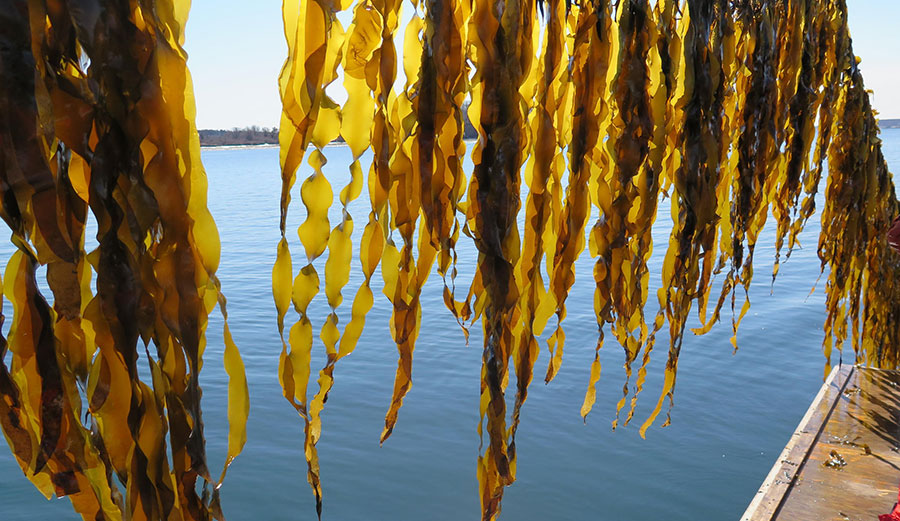When I was younger, I used to drink a beer called Lucky. I never liked it, but if you grew up where I grew up and told anyone you didn’t like Lucky, you were destined to become a social outcast. And although it will get you drunk, Lucky tastes like shit (bracing for the onslaught of VI rage). We did, however, do one thing that masked the taste of it with something worse. Cut the top off a bulb of bull kelp, then cut the bottom off. Pour the Lucky down it, and it becomes a salty, slimy beer bong that tastes absolutely vile. It was great, but it tasted like shit. That’s because sea kelp tastes like shit, and despite numerous chef’s failed attempts at making it taste good (it was the new kale a few years ago!), last year a brewery made a beer out of it. It’s called Selkie, and before I bash the idea of kelp and beer, let me say that I have not tried it. It could be incredible. It could be the best beer on earth.
Selkie is made by a New Hampshire beer joint called Portsmouth Brewery. The owner, a woman named Joanne Francis, got the idea over a decade ago, when she found a Scottish beer called Kelpie. “It was a beautiful beer, so memorable,” she told NPR. “I just loved the idea.”
When she brought the idea home with her, however, most people reacted like me: “that sounds TERRIBLE.” After talking to quite a few different people, she finally found someone who decided to give it a shot. “It fell on deaf ears among a lot of brewers,” Francis recalls. Then she found Matt Gallagher.
“I could only assume the flavor qualities were going to be salty-briny,” he said, “and the only way I could think to bring some sort of quaffable balance to that profile would be barley malt sweetness.” For the not-so-astute reader, “the only way I could think to bring some sort of quaffable balance to that profile” is a thinly veiled way of saying “this might taste like shit.”

Sugar kelp in your beer? Image: Brittney Honisch/Bigelow Laboratory for Ocean Sciences
Gallagher, Francis, and Charlie Ireland, a guy with a name like a 1930s mobster, got together to throw caution to the wind and throw seaweed into the beer. Now, this isn’t the first time kelp has been a part of beer–not by a long shot. “Kelp isn’t a new flavor enhancer for brewers,” wrote Andrea Shea. “For hundreds of years, coastal farmers in Scotland grew grains in seaweed beds. The terroir imbued the region’s beers with hints of sea breeze.”
They initially decided on sugar kelp, the same stuff that’s generally used in many Japanese dishes, and after a few batches added dulse and alaria to the mix. “Right now we’re growing sugar kelp, steelhead trout and blue mussels — all in the same floating structure,” Chambers said. “The fish are in net pens inside the frame, and along the perimeter outside of the frame we have the sugar kelp and mussels growing — so it’s almost like a biological curtain.”
So how does it taste? “As I take my sip — and it crosses over my palate — I’m getting a full rush of barley malt sweetness,” Gallegher said, presumably with a straight face. “Then, long after you’ve had your sip, you experience a saltiness clinging to your lips — like when you jump out of the ocean and a while later you can still taste it.”
See more from Portsmouth Brewery on Facebook and on their website.

